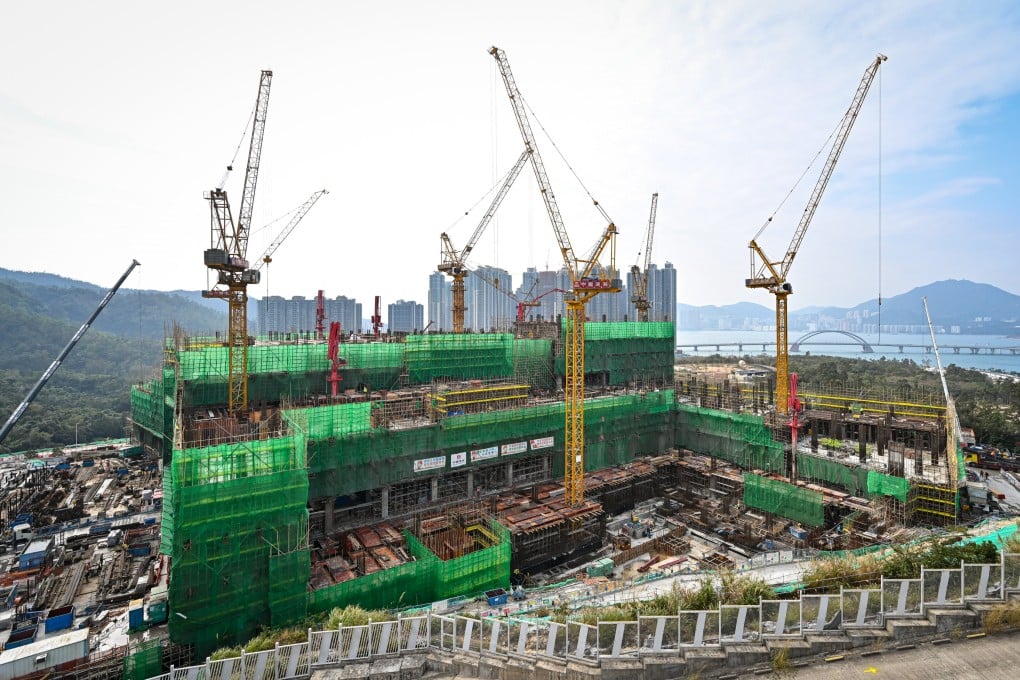
 i_need_contribute
i_need_contribute

The hospital under construction in Tseung Kwan O. The facility is set to open in late 2025. Photo: SCMP
Cheung Wai-lun, the project director at the Health Bureau’s Chinese Medicine Hospital Project Office, on Sunday said he expected the government-funded facility to charge at a level close to the HK$120 (US$15) outpatient attendance fee levied at public Chinese medicine clinics.
He said the hospital would also work with the private sector to build a strong healthcare network which connected all stakeholders to promote the development of traditional Chinese medicine in the city.
“We wish that what we develop at the hospital can be transferred to the private sector … Not only can private practitioners provide services at the hospital, but also they can bring the knowledge and skills they acquire here to the private market,” he said.
The hospital is set to open in Tseung Kwan O in late 2025 and provide outpatient treatment in the first year, with inpatient services added the next year.
Under a public-private partnership model, 65 per cent of the services will be subsidised by the government, and the other 35 per cent will be provided by the private sector.
Cheung said that engaging the private sector was important because it provided 95 per cent of the traditional Chinese medicine services in the city.
Patients seeking private services would be able to choose their practitioners and enjoy customised services, with the rates decided by the market, he said.
Cheung said the public clinics would become “satellite clinics” after the hospital went into service.
Practitioners at clinics would be able to directly refer patients to the hospital if the case was complicated or required certain treatments. After being discharged, patients would receive follow-up consultations at the community clinics.
Public clinic practitioners would also work at the hospital on a rotation system to add to their expertise and get familiar with available treatments.
“We hope this integration model will also extend to the private sector … we are to build a strong platform to push for the development of Chinese medicine together.”
Another key focus of the hospital is the use of its traditional Chinese medicine inpatient wards, a first for Hong Kong.
Cheung said patients would be admitted based on the severity of symptoms, their self-care abilities, treatment intensity and their monitoring needs.
“For example, those suffering from a herniated disc are often in deep pain, and they can hardly leave their bed or walk on their own – these cases could be hospitalised because they can hardly take care of themselves,” he said. “But if they are just feeling unwell, they can just seek outpatient services.”
Cheung added that the hospital would provide a range of services, except for accident and emergency, surgery under general anaesthesia and childbirth.